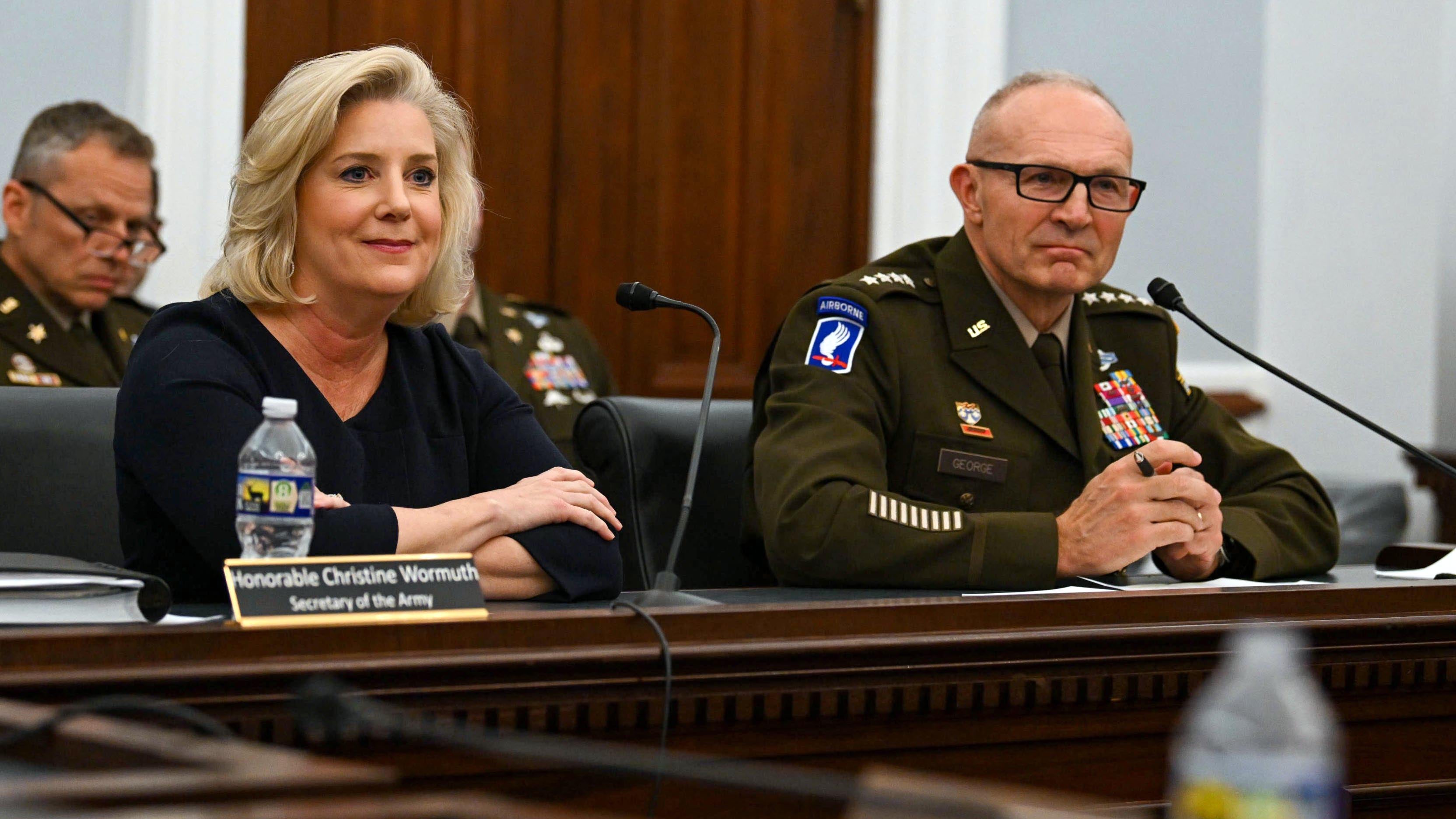Wormuth: Army Budget Supports ‘Profound Transformation’
Wormuth: Army Budget Supports ‘Profound Transformation’

In today’s complex and volatile world, the Army must transform—and transform quickly, the service’s top leaders testified April 10 on Capitol Hill.
“The world is more volatile today than I have seen it in my 36-year career,” Army Chief of Staff Gen. Randy George said. “A spark in any region can have global impacts. Meanwhile, the character of war is changing rapidly. Our Army is as important as ever to the joint force. We must deter war everywhere and be ready to respond anywhere.”
Army Secretary Christine Wormuth said the Army is in a period of “profound transformation.”
Wormuth and George testified before the House Appropriations defense subcommittee during a hearing on the Army’s fiscal 2025 budget request.
They also urged lawmakers to pass the $95 billion supplemental bill that’s pending before Congress. The Army has “cash flowed about $800 million” to support operations in Ukraine and the Middle East, and it is “planning on the supplemental to come through,” Wormuth said.
The money will be critical to replenishing the equipment the Army has sent to Ukraine and funding investments in munitions production, particularly 155 mm shells, Wormuth said.
Without the supplemental funding, the Army will not have enough funding by the end of May to redeploy units currently deployed to Europe or transport their replacements, Wormuth said. It also will not be able to support certain exercises or activities, she said.
“There are some real problems for us that are going to come out if we don’t have that supplemental,” Wormuth said.
For fiscal 2025, the Army has requested a budget of $185.9 billion, a 0.2% increase from the fiscal 2024 request.
“This year, like last year, the Army’s fiscal 2025 budget continues to support the most ambitious modernization program the Army has undertaken in the last 40 years,” Wormuth said. The Army has seen “tremendous progress” by “staying consistent with our goals,” she said.
The Armored Multi-Purpose Vehicle, Integrated Air and Missile Defense Battle Command System, Mid-Range Capability, Next-Generation Squad Weapon and Precision Strike Missile are some examples of the “critical new systems” the Army has recently delivered to the force, Wormuth said.
But the Army’s transformation doesn’t stop at capabilities or next-generation equipment, the leaders said. It also includes transforming the service’s force structure and recruiting enterprise while delivering ready combat formations and taking care of soldiers, Army civilians and their families.
When it comes to force structure, the Army is reducing about 32,000 spaces in its formation while adding 7,500 new ones to accommodate new units and capabilities, such as the multidomain task forces, while eliminating excess positions. “We’re shrinking excess force structure so the units we have are manned and ready,” Wormuth said.
The Army also is “fundamentally transforming” its recruiting enterprise, she said. While the service ended fiscal 2023 with 102% of its retention mission, it continues to face challenges recruiting.
“We’re working around the clock to overcome our recruiting challenges,” Wormuth said, adding that the Army has made “solid” progress.
Taking care of soldiers and their families are another priority. “As we pursue this transformation, we must also take care of our people,” Wormuth said. The Army is planning to invest an average of $2.1 billion a year in improving its barracks, expand the Holistic Health and Fitness program to improve soldier well-being and improve child development centers and on-post housing, among other initiatives.

